“Ballenesque is a viewpoint of the world from my psyche”
Interview with Roger Ballen
Roger Ballen was born in the United States in 1950 and now living and working in Johannesburg, South Africa for more than forty years. We talked with one of the best-known photographers of our time apropos of his exhibition in Budapest, where we discussed the path from documentary to staged photographs, his interest in psychology, the complex relations between language and photographs, and his works at this year's Biennale Arte in Venice.
The show titled Ballenesque – The World According to Roger Ballen showcases more documentarian, street-photography-like images, and staged photographs too. Which method do you think aged better?
I will say it does not matter what you use to create images. The only thing that matters is that pictures instantaneously enter the subconscious mind of the viewer. Thinking of staged photography for a lot of people means you can easily repeat the photograph. But most of my photographs can not be repeated, there is something instantaneous about the works which makes them enigmatic in their way.
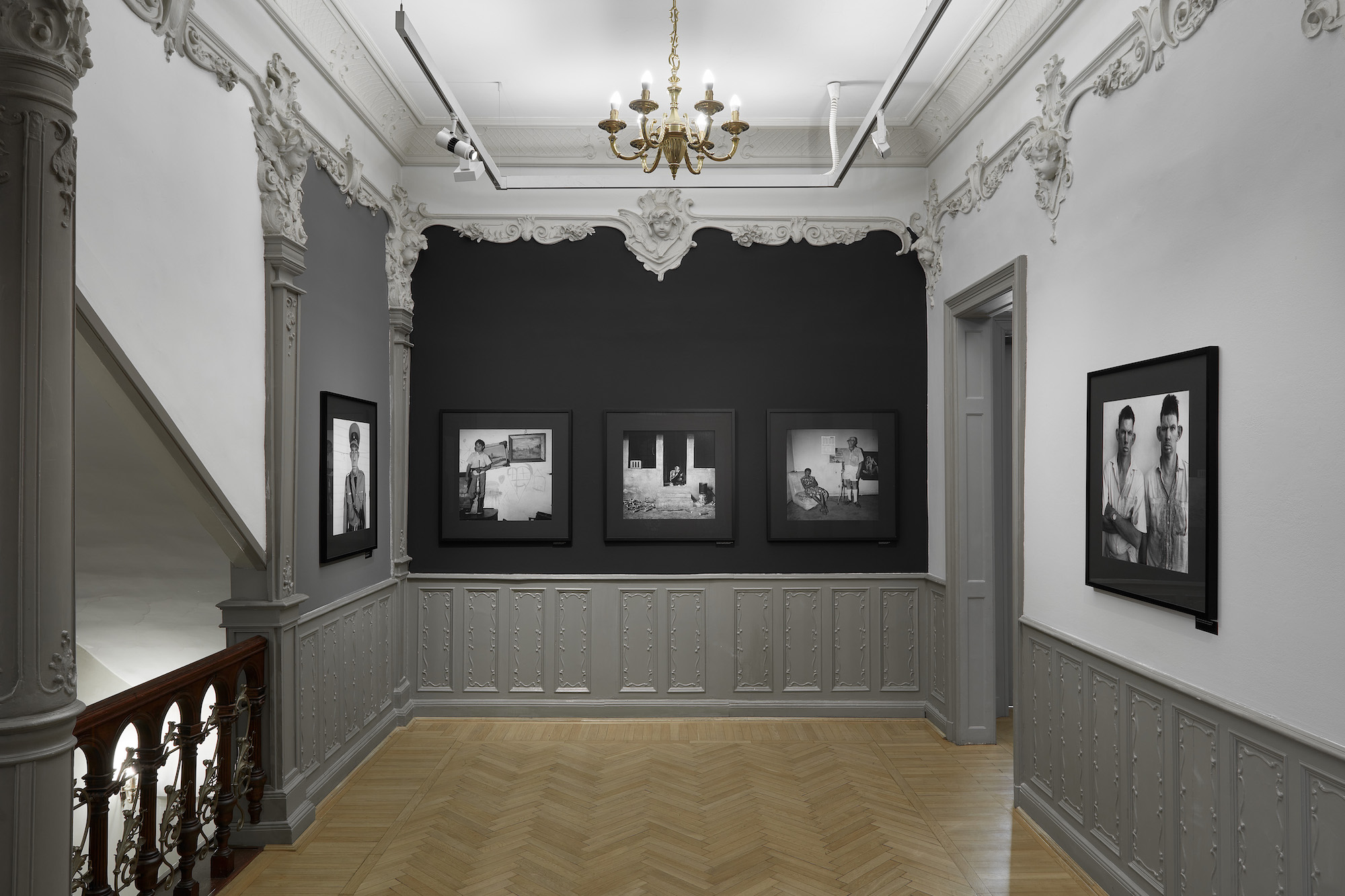
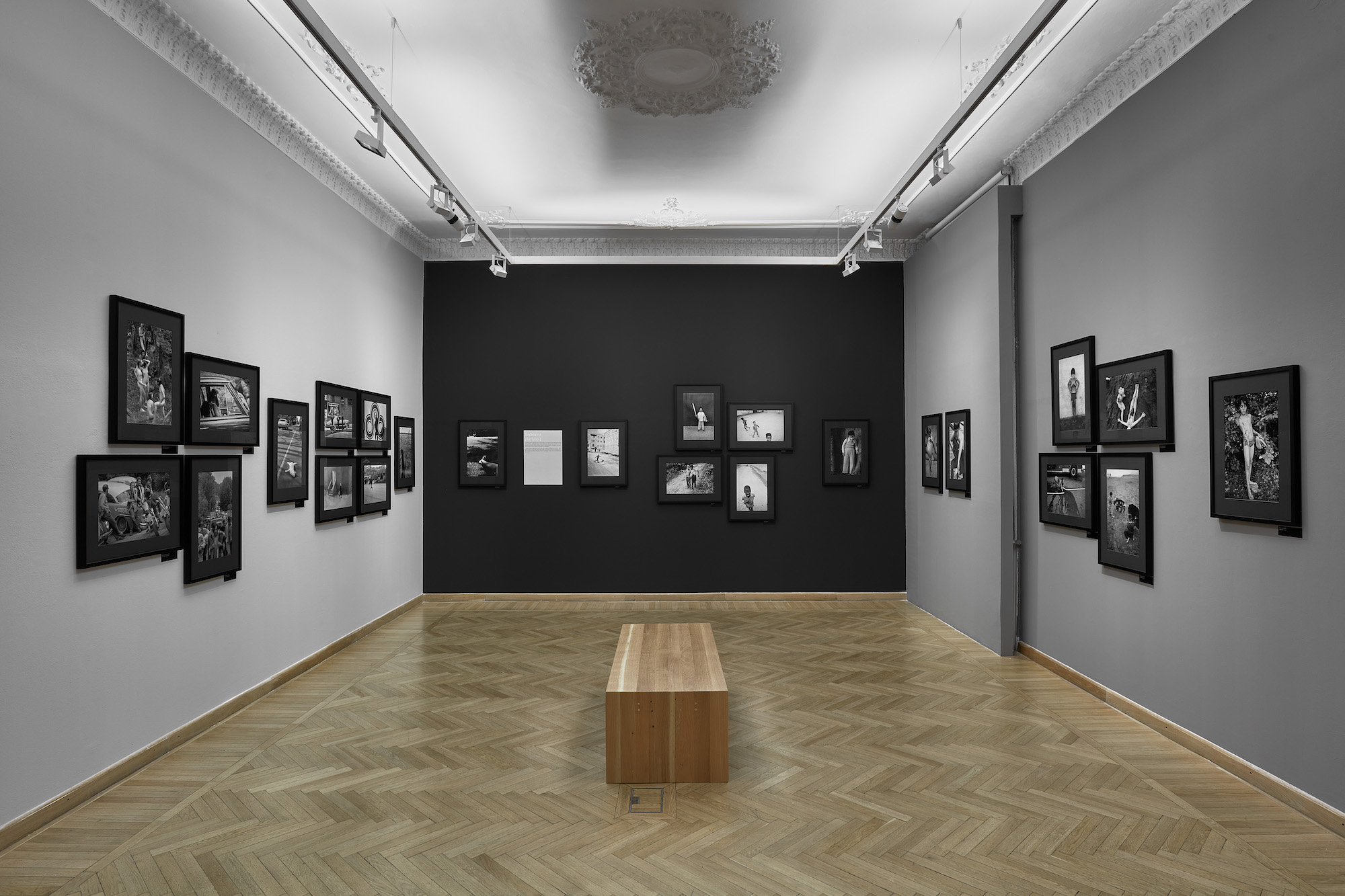
May I ask what artistic methods you use when you are planning these staged photographs and how they affect the final result and the previously mentioned enigmatic feeling?
I never plan anything, I dive into the artistic process with a quiet mind. And then it is a “step by step by step” process. It might be a dog walking past you or a baby sleeping on the bed or a door on the wall that opens the way into how to build the picture. Sometimes it all comes together spontaneously, sometimes I have to move a chair, or tell somebody to put up a drawing, but there are layers and layers. I commonly state that my photographs are like paintings. If you look at a painting it can be a thousand brush strokes. To get to these pictures might be a thousand points of decision. And each one requires an artistic understanding and it took me forty-five years to get to that confidence level. It all has to occur organically with an artistic viewpoint in mind. Because anybody else in that place in a million years can’t do what I am doing. Sort of like I can not draw like Picasso.
The conscious, subconscious, and similar notions pop up quite regularly when you talk about your work. Are you interested in psychology and philosophy?
My first degree was in psychology. I am very interested in this area. I have two degrees actually, psychology and then I have a PhD in geology. Geology is about prehistoric earth. But I am more interested in philosophical psychology.
You describe your photos as existential psychodramas. Could you please tell me what these words mean to you?
I guess if you would try to define the word existential it is a desire to find out about the meaning of life and who you are and what your purpose is. So that is one reason to take the picture. Images become a diary of your life in some way or other. You are trying to make sense of things for yourself. Psychodrama is finding deeper meanings of your identity, and deeper pathways to who you are on a more primal level.
Regarding the early photographs: when you took these images on the streets what interested you?
I was twenty-three, twenty-four or twenty-five at the time. If you want to look at it from a more personal level, it is about finding my childhood in those pictures and the images were made on a four or five-year-long backpacking trip from Cairo to Capetown. It’s nice that in a few months a publishing house from Italy is going to republish my book created from these images and titled Boyhood. This book is almost fifty years old, it was first published in 1979. Sometimes your earlier work inspires you in different ways and your later work inspires you in other ways. It is always nice to go back to the past and see what inspired you.
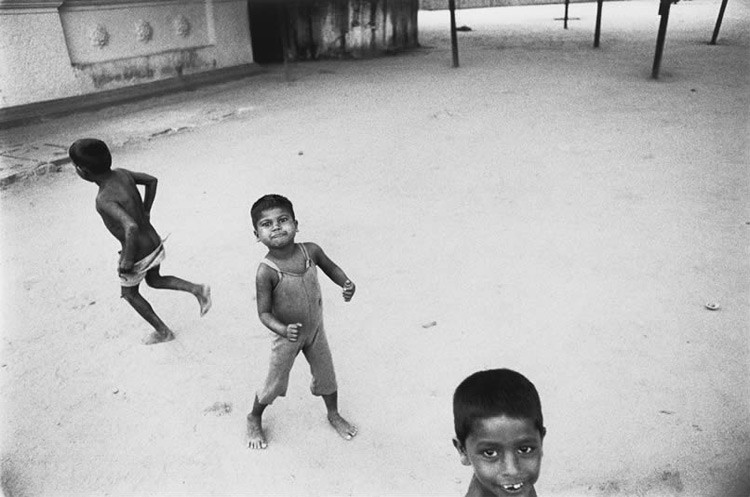
It seems like you built a connection with the people in the photos.
The one advantage of children is that they do not mind being photographed. If I photograph old ladies they might be more self-conscious. When I walked around Africa or Asia it was unique to be photographed. It was something special. Now nobody thinks it is unique to take photographs anymore. The whole thing feels very different.
I think a unique look is a photographer’s own. Can you pinpoint what interests your eye?
It’s very difficult because I have always said that if you can describe my pictures other than using words like enigmatic, strange, or profound, then it is a bad photograph. So better photographs go beyond words. If I ask you a question: can you please describe where your thoughts are coming from, what do you say?
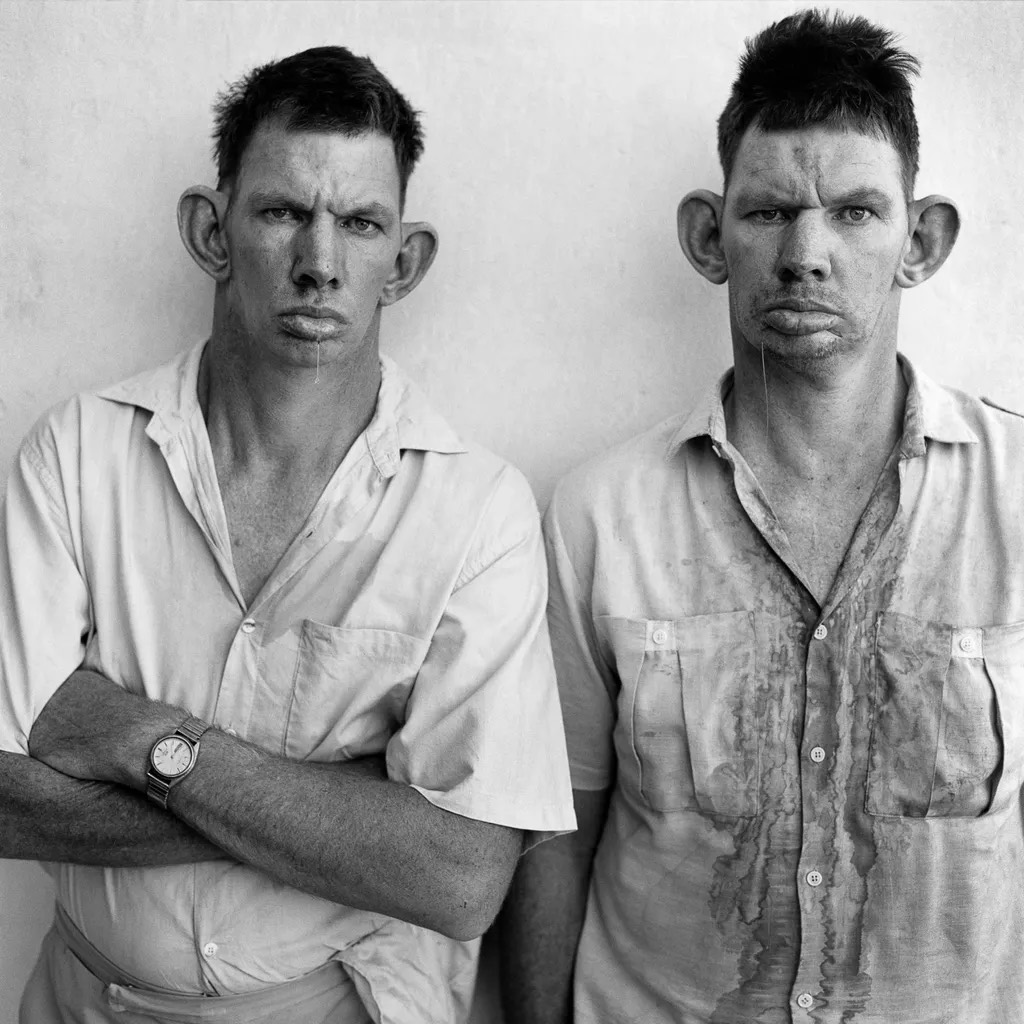
But you still give quite descriptive titles to your photographs.
There are two reasons for this. Imagine that somebody is interested in Roger Ballen’s cute picture with a bird in it. Oh, which one are you talking about? It has to have a title because if nobody would be allowed to have a name it would be confusing. The other reason is that titles sometimes help the viewer dive into the picture. The title can try to objectify, and can be clever but should help the viewer to come to terms with something about the work even if it is objective. Most paintings have names – in photography, people have resisted giving names to their pictures for various reasons I guess. But for me it makes more sense: you have to give it a name otherwise it becomes anonymous. It is as practical as anything else. I would never consider not giving titles.
Talking about practicality: you are creating images. During this process how much do you lean on the selective process? Do you take a lot of images and then later select what you are going to show? Like in the case of the twin photograph (Dresie and Casie, Twins, Western Transvaal, 1993) where you decided to showcase the photograph with the twin’s rigid expression rather than the smiling ones.
The first thing you have got to realize is that the speed of the shutters can freeze a bullet. Also, the film always has its chemistry, it transforms the work in a way that you can’t predict. When taking an image you can feel like you are around the bullseye but you can never never never say for sure that “I got it”. During almost my entire career there have only been a few cases where I got two equally great pictures. Anything living is organically changing all the time in subtle ways. Like after every word I am a different person. The cells are multiplying and everything is changing.
The title of your exhibition in Budapest (Ballenesque – The world according to Roger Ballen) refers to one of your books that focuses on the connection between art brut and your work. Is this connection important to you?
Ballenesque is a viewpoint of the world from my psyche. So I wouldn't necessarily say it is art brut – it’s Ballenesque. Ballenesque contains some aspects of art brut, but it contains some aspects of surrealism, the history of photography, and even South Africa too. I wouldn’t want to say that any of these influences are the primary point of departure. And there is literature. I was more influenced by Beckett than I was by photography.
The drawings that you use in your images could remind the viewers of art brut too. How did the drawings come into your work? What influenced you to take up drawing?
In the Platteland series, there is a picture with a gunman, a boy with a drawing behind him.
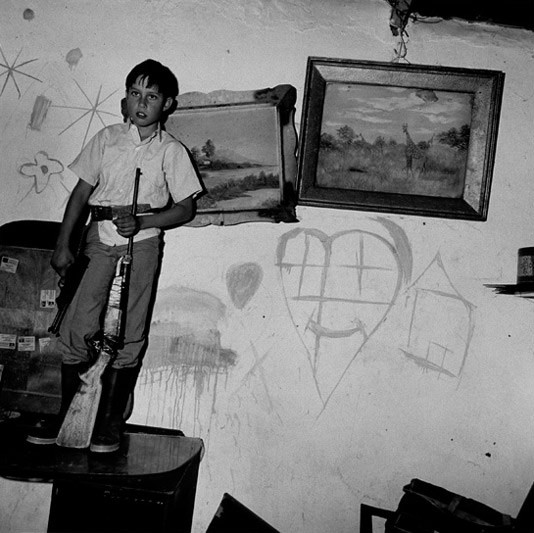
The idea of the drawings came from working in people’s houses where the family would let the children draw on the walls. So the idea of using integrated drawing in photography came from these actual experiences with people. Then it eventually came to a point when I started to make my drawings. Later on, by the beginning of 2002, the pictures were mixed with my drawings and the drawings I found. To the present time, every picture I take has a drawing in it. People underestimate how difficult it is. Because ninety-nine out of a hundred photographs that contain drawings in the history of photography show graffiti. It is just taking a picture of something on the wall. To integrate that with something else is difficult. What is the drawing saying in relation to everything else in the picture?
Photography and drawing both have different connections with time.
People have been drawing since they were cavemen. Photography is recent. Once the drawing came into my work it is harder to define. My early work is often called documentary, regarding the later work you can say you don’t know what you are looking at sometimes. The problem with art these days – including photography – is that the story behind the works is often more important than the images themselves. It is all about some sort of social or political story that people can conjure up to define the picture.
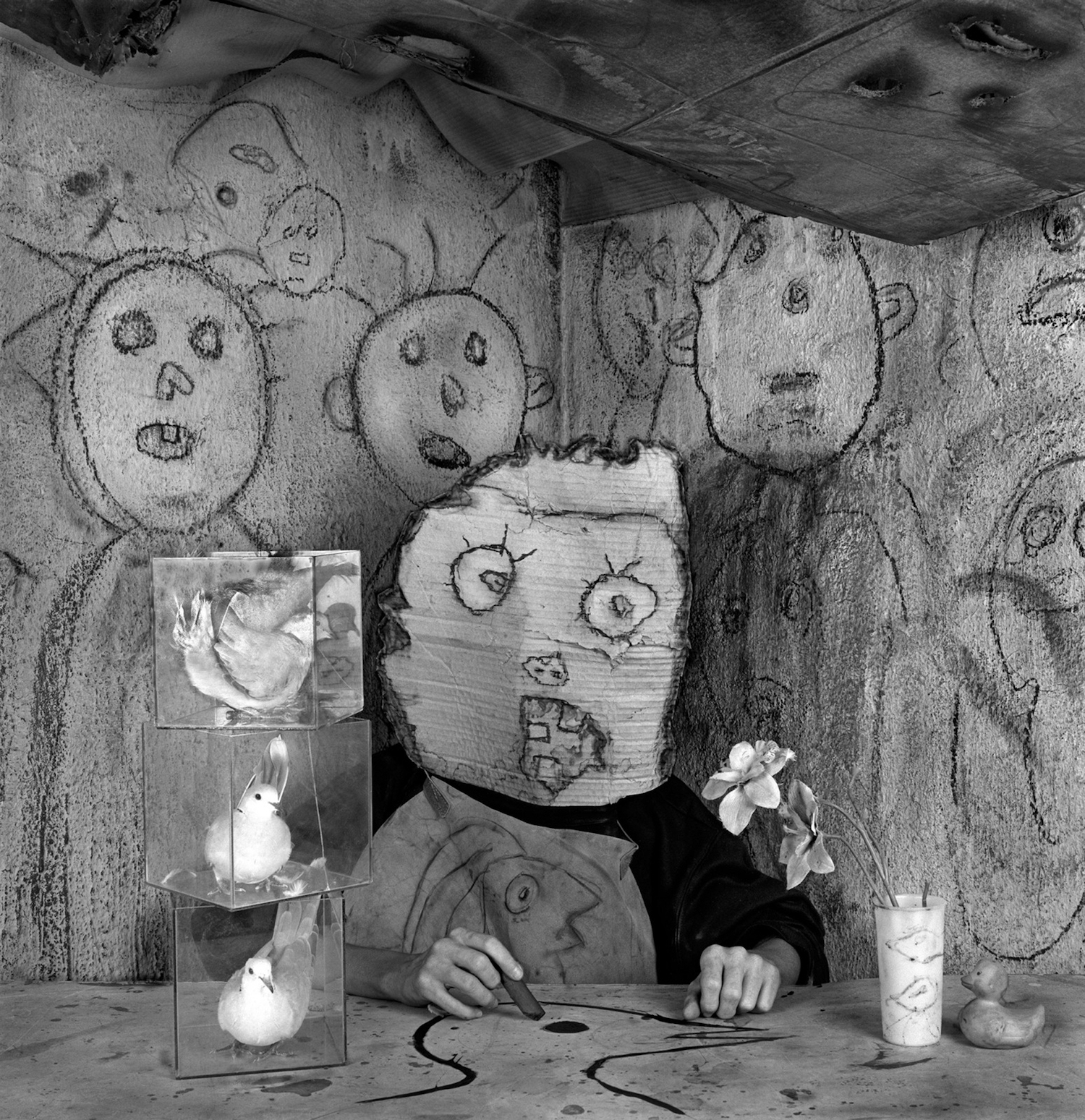
This year you were chosen as one of the three artists to represent South Africa at the 59th Biennale Arte – were you happy when you received the news?
In South Africa, you have to send your project proposal to the department of arts and culture. It was three o’clock on Christmas day when I received the news that my Venice application was successful, so it was a nice Christmas present.
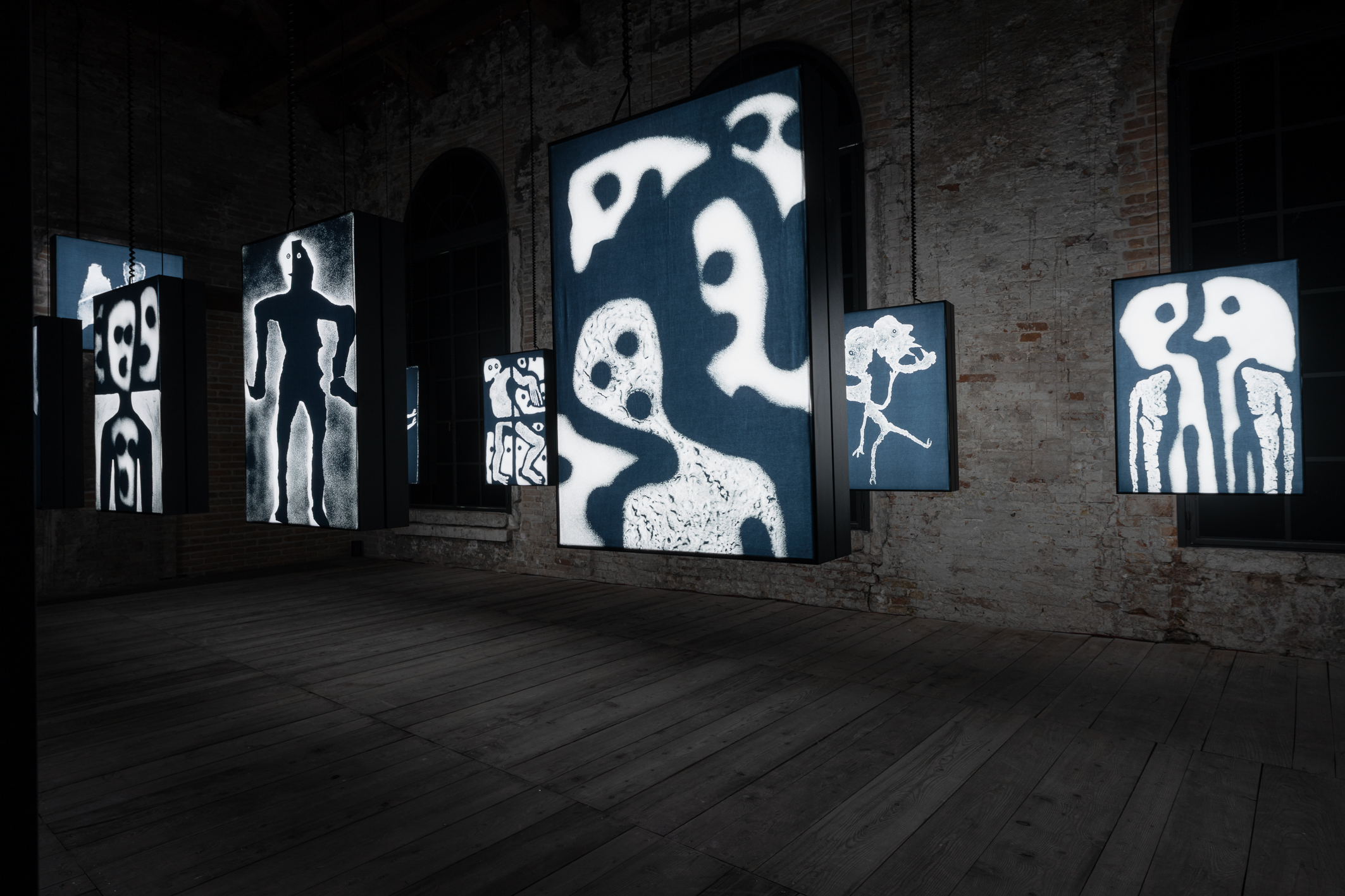
The glowing screens of The Theatre of the Apparitions exhibited in Venice are ethereal. Could you tell me about the process behind creating the installation?
The Theatre of Apparitions first was created as a film and book in 2016. The photographs included in the project were taken of drawings I made on window glass. I had several exhibitions with these photographs but I have never exhibited the drawings themselves. Unfortunately, the materials I used on the glass didn’t last very long – they fell apart and cracked so I couldn’t keep them. And they were created on real windows in a real warehouse so I couldn’t take the windows with me. For my Venice proposal, I knew that I did not want anything socio-political – and while thinking about what to show I arrived at the idea of the light boxes. Then I started wondering if we could make double-sided light boxes until the point when we found this man who runs a very good factory in Johannesburg and is a perfectionist and was able to make the boxes I wanted.
Drawing on glass seems like a trial and error process.
It is about learning different techniques. But you can’t change the image once it is on the glass. It is a very quick process. I used different materials. It took me years of experimentation with different ways of making these images. It was a long process, some of my best pictures were made in the first months.
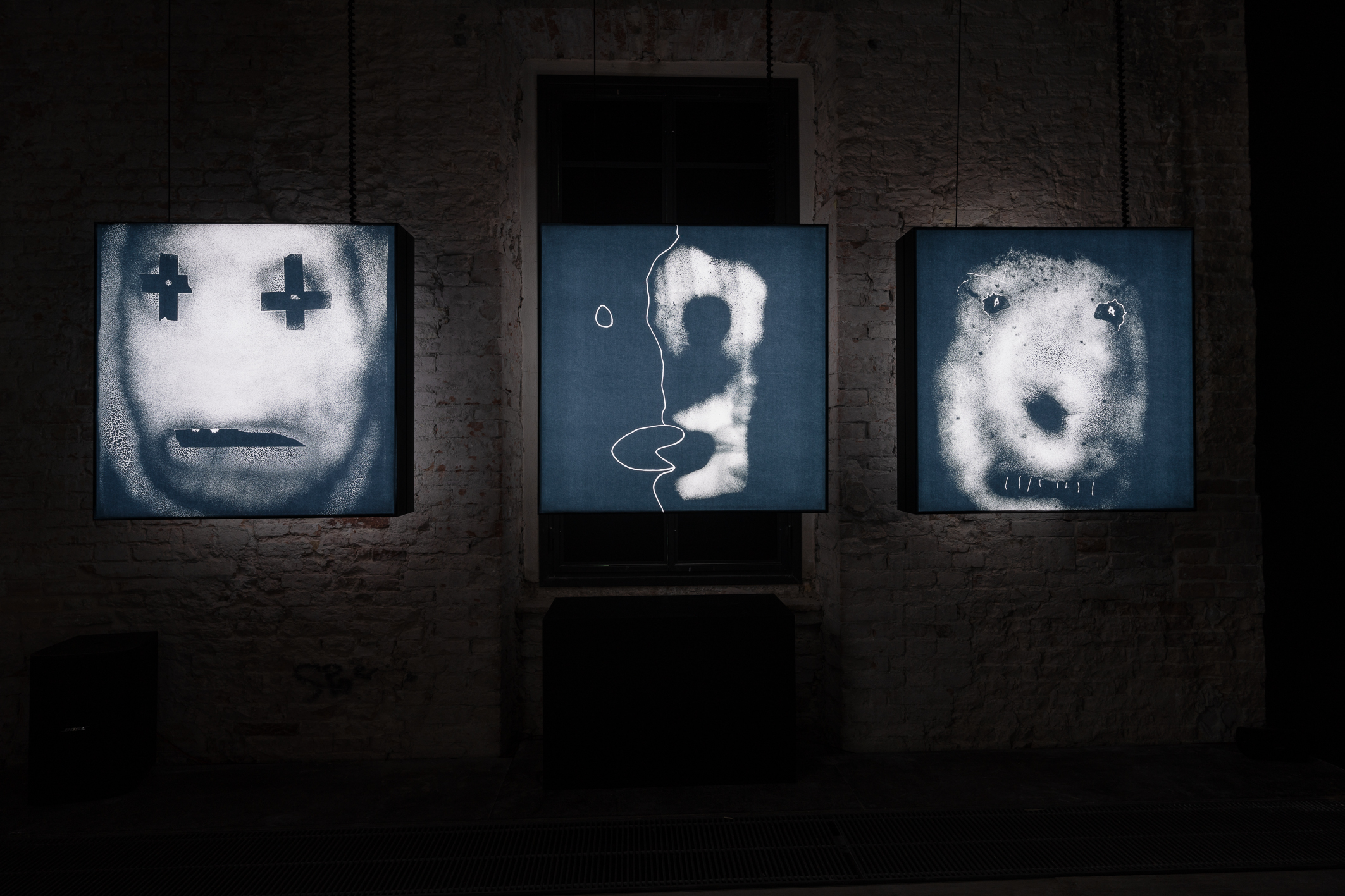
Did you document all the drawings?
Unfortunately, I did not. It is a shame, I should have done it. You are so involved in what you are doing and you do not know how it is going to turn out… There is something important about keeping things mysterious. For example, I wouldn’t allow anybody to watch me take pictures. Because it destroys the mystery.
Returning to the Biennale: was there any exhibition or artwork that you liked?
I was in Venice for three weeks. The thing is that I do not necessarily go to galleries and museums to see art. I have this beautiful bird I bought five years ago for 30 cents. Every time I come home I see that the bird is beautiful. So for 30 cents I bought something better than any piece of art. It is better to have the bird than to have a Picasso. So why need a Picasso? And of course, I have some art on my walls at home but what I am trying to say is that I don’t really have to go to these places to see art.
BALLENESQUE – THE WORLD ACCORDING TO ROGER BALLEN
8 June 2022 – 21 August 2022
Curator: Péter Baki
Cover image: Roger Ballen: Cat catcher, 1998